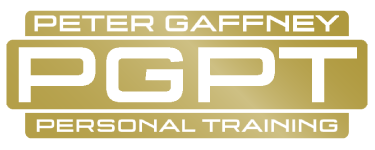[cs_content][cs_section parallax=”false” style=”margin: 0px;padding: 0 0px;”][cs_row inner_container=”true” marginless_columns=”false” style=”margin: 0px auto;padding: 0px;”][cs_column fade=”false” fade_animation=”in” fade_animation_offset=”45px” fade_duration=”750″ type=”1/1″ style=”padding: 0px;”][cs_text]
As a fitness professional I am often asked ‘what’s the best exercise?’
What’s the best exercise for?
- Weight loss
- Fat loss
- Flattening my stomach (FYI that’s the same thing as weight loss/fat loss!)
- Toning my arms (my eyes are rolling)
- Building a bigger bum
- Get stronger
Of course, the answers to these questions do vary. For example, Close grip push ups, EZ-bar skull crushes (excuse the gym lingo), and narrow grip dips will all help build muscular triceps (avoid the bingo wings) but have less crossover and benefit for those wanting to flatten their stomach.
In saying that…
The chances are, if you’re able to knock out good quality dips and push ups then you probably are plenty strong enough, have a healthy body weight, and a good power to weight ratio (low body fat).
My point here is that by achieving one goal you may find you’ve inadvertently achieved many more.
I often set ‘movement’ goals, such as holding a hand stand or perfecting a muscle up (lifting your body weight while hanging from a bar to a position above the bar).
Why? Because the athletic requirement guarantees rounded results.
And for those newer to exercise, fear not. All exercises are infinitely scalable. I find the sliders (a cheap and multifunctional tool) particularly useful in building an athletic base, ditto the resistance bands for making upper and lower body pushing and pulling exercises that bit easier.
Back to the blog title ‘What is the best exercise?’. I’ve already highlighted my approach (Have movement goals, so, again, for a first-time gym goer, maybe focus on hitting your first or first set of 10 push ups rather than focussing on wanting toned arms (the arms will take care of themselves…).
Now, the exercise choice and prescription are of course important (and something you need not worry about if you have a good PT), what is arguably more important is training intensity.
For those budding sports scientists I mean this in the literal sense. I don’t mean lift heavy weights all the time (intensity by definition) I mean TRAIN HARD…[/cs_text][x_image type=”none” src=”https://pgpt.co.uk/wp-content/uploads/2018/10/dontquit.png” alt=”” link=”false” href=”#” title=”” target=”” info=”none” info_place=”top” info_trigger=”hover” info_content=”” style=”padding:5%;”][cs_text]
Enter all manner of cheesy quotes, a few faves:
- “Whatever your mind can concieve your body will achieve”
- “Go hard or go home”
- “Lightweight baby…., Ain’t nuffin but a peanut, yea buddy”
- “Train insane or remain the same”
If you don’t have a trainer and you don’t know what to do then the answer is simple, ‘the best exercise is the one you do’. Find the exercise you enjoy, but, do it to the best of your ability!
Whether you like dance, walking, yoga, swimming, it doesn’t matter, but do it well.
I’d like to finish this blog with one more quote, one from one of my role models in the strength world, and one that everyone should consider, no matter what your favourite exercise endeavour is:
“Strong people are harder to kill than weak people and more useful in general.” (Mark Rippetoe)
Yours in training,
Phil
[/cs_text][/cs_column][/cs_row][/cs_section][/cs_content]


